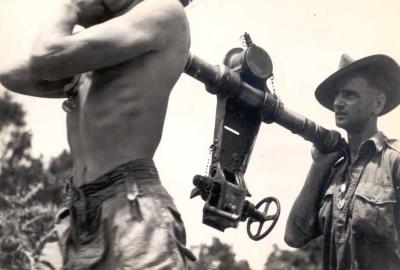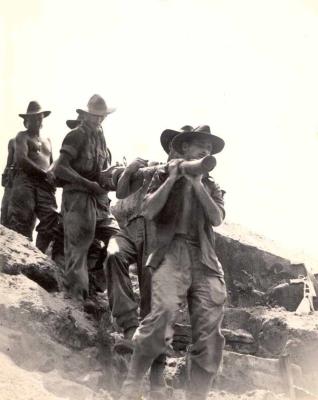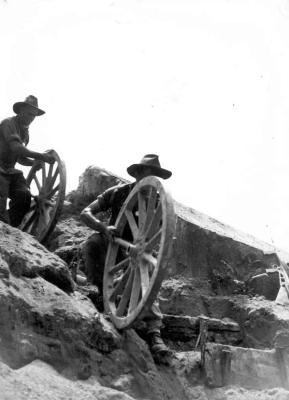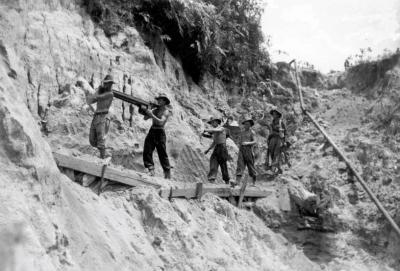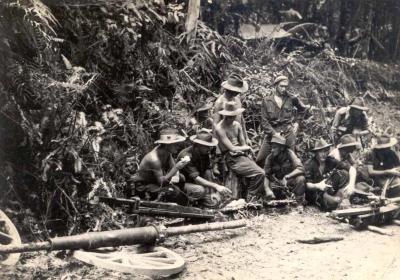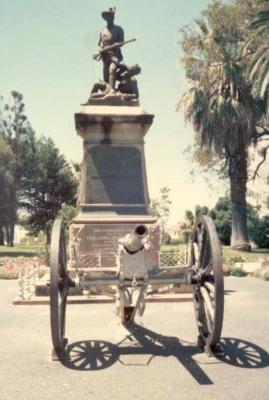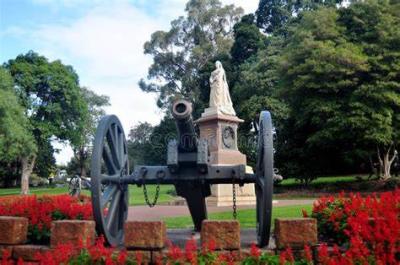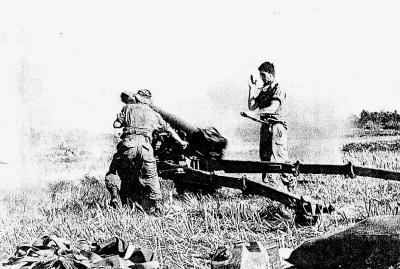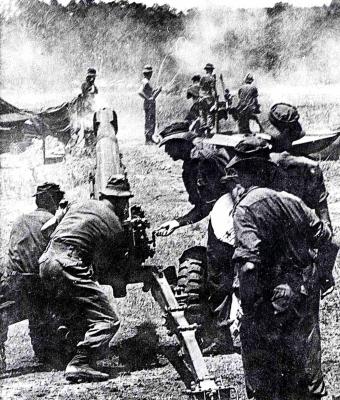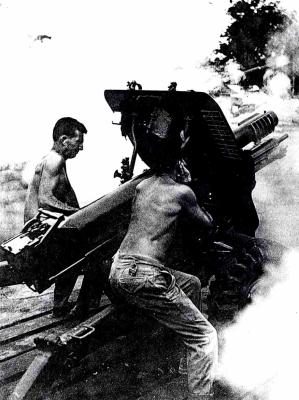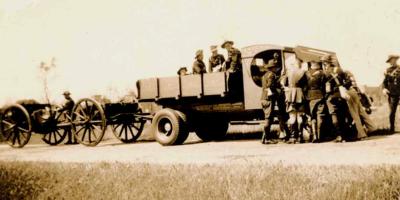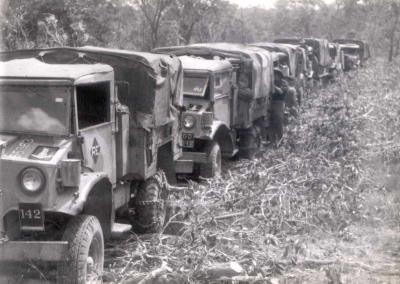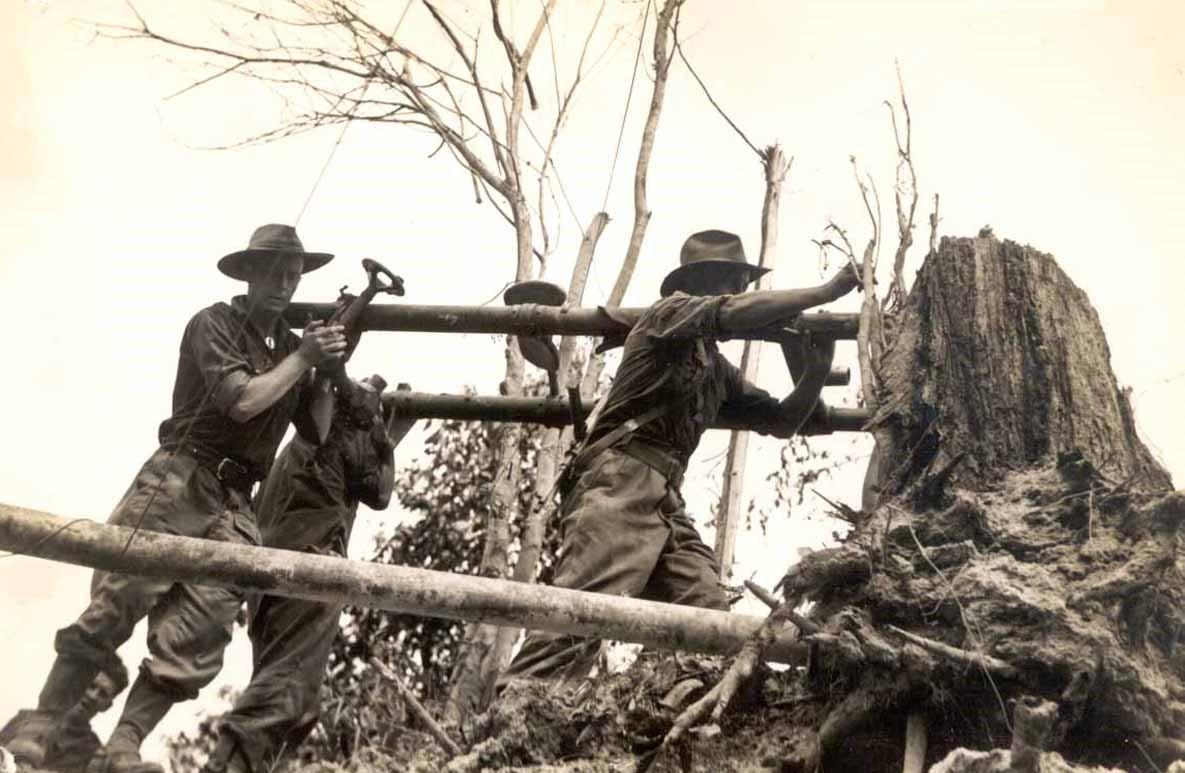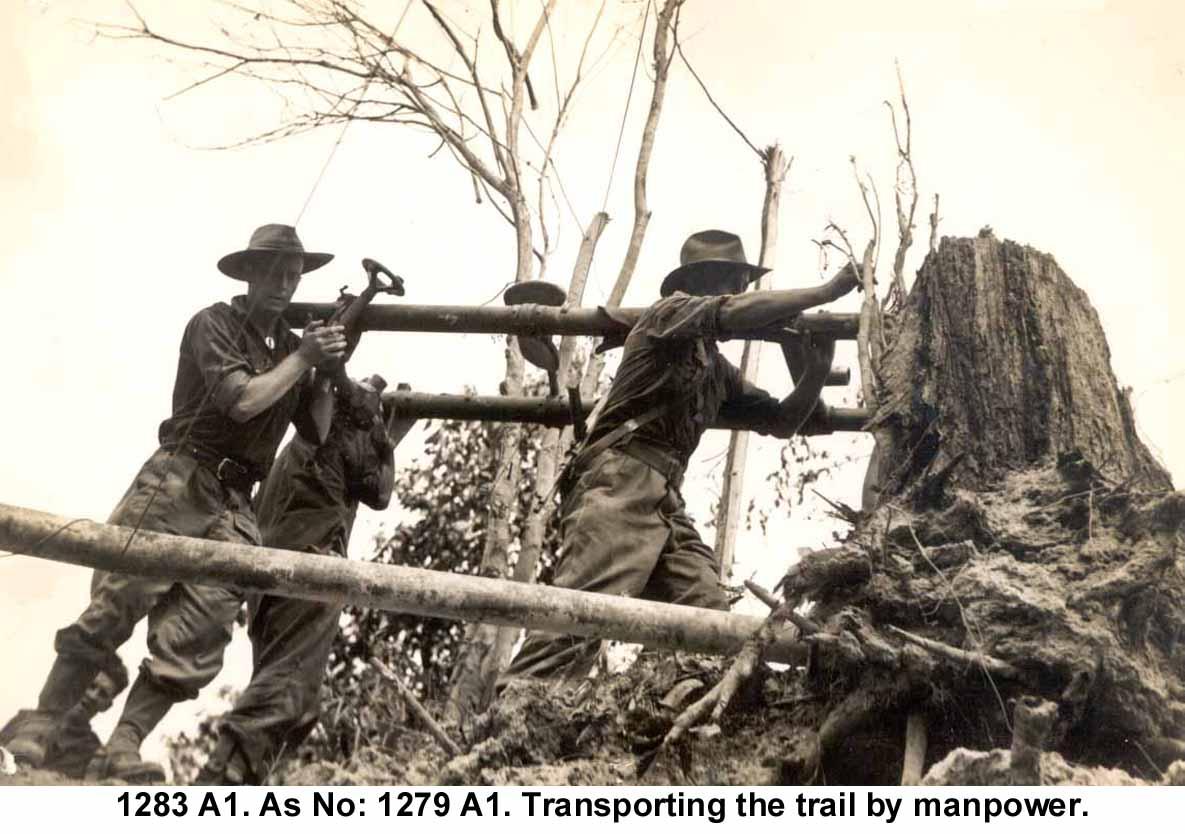World War 2, South West Pacific, Borneo, Tarakan, 2/7 Field Regiment, 1945
Digital image of photograph of gunners of 2/7 Field Regiment carrying the trails a captured Japanese 75 mm gun to HMAS Margy position, Tarakan, Borneo
After withdrawal from the Middle East, the 2/7th Regiment spent 22 months out of action on the Atherton Tablelands. In mid-1945, it was deployed on Operation Oboe, to provide fire support for the 9th Division. And assigned to the 26th Brigade which was to capture Tarakan. In April 1945 the regiment was moved to Morotai Island. The day before the main landing at Lingkas on 1 May, the 57th Battery landed on Sadau Island, where they established themselves to fire on Lingkas to provide cover for engineers that were tasked with clearing the beach obstacles. For the operation, the regiment was equipped with twenty-four 25-pounder field guns.
The following morning the battery fired in direct support of the seaborne assault; it was the first time ever that a unit of the Royal Australian Artillery was employed in such a role. Once the beachhead was established both the 13th and 14th Batteries came ashore and by 4:00 pm they were both in action. The 57th was also moved to Tarakan from Sadau late in the day.
Over the next three months the Regiment would fire over 37,000 rounds in support of the 26th Brigade. This included rounds from a captured Japanese 75 mm mountain gun. The regiment also provided fire control for a 3.7-inch anti-aircraft gun from the 132nd Anti-Aircraft Battery that was co-located with the regiment's guns in a position that came to be known as "HMAS Margy". In order to maintain ammunition supplies, the regiment was resupplied by air from Morotai, while the captured Japanese gun was resupplied as rounds were found by the advancing troops.
Details
Details
The Type 94 75 mm mountain gun was used as a general-purpose infantry support gun by the Imperial Japanese Army during the Second Sino-Japanese War and World War 2 and was the standard pack artillery piece of Japanese infantry divisions. The gun could be broken down into eleven pack loads within three to five minutes for transport by animals or men. The heaviest component weighed 95 kg.
The original image is in the Collection of the Royal Australian Artillery Historical Society of Western Australia.
Australian Army Museum of Western Australia
Australian Army Museum of Western Australia
Other items from Australian Army Museum of Western Australia
- World War 2, South West Pacific, Borneo, Tarakan, 2/7 Field Regiment, 1945
- World War 2, South West Pacific, Borneo, Tarakan, 2/7 Field Regiment, 1945
- World War 2, South West Pacific, Borneo, Tarakan, 2/7 Field Regiment, 1945
- World War 2, South West Pacific, Borneo, Tarakan, 2/7 Field Regiment, 1945
- World War 2, South West Pacific, Borneo, Tarakan, 2/7 Field Regiment, 1945
- Pre 1914, 2nd Anglo Boer War, Western Australia, Kings Park, Boer War Trophy Gun
- Pre 1914, Western Australia, Perth, Kings Park, Queen Victoria, Memorial, Place Holding Cannon
- Post 1945, South East Asia, Vietnam, 105 Field Battery, RAA, 1966
- South East Asia, Vietnam, Hanh Province, 105 Battery, RAA, 1968
- Post 1945, South East Asia, Vietnam, Bien Hoa Province,105 Battery, 1966
- Inter War, Western Australia, Rockingham, 3 Field Artillery Brigade, 1939
- World War 2, Australia, Queensland, Atherton Tablelands, 2/7 Field Regiment, 1943
